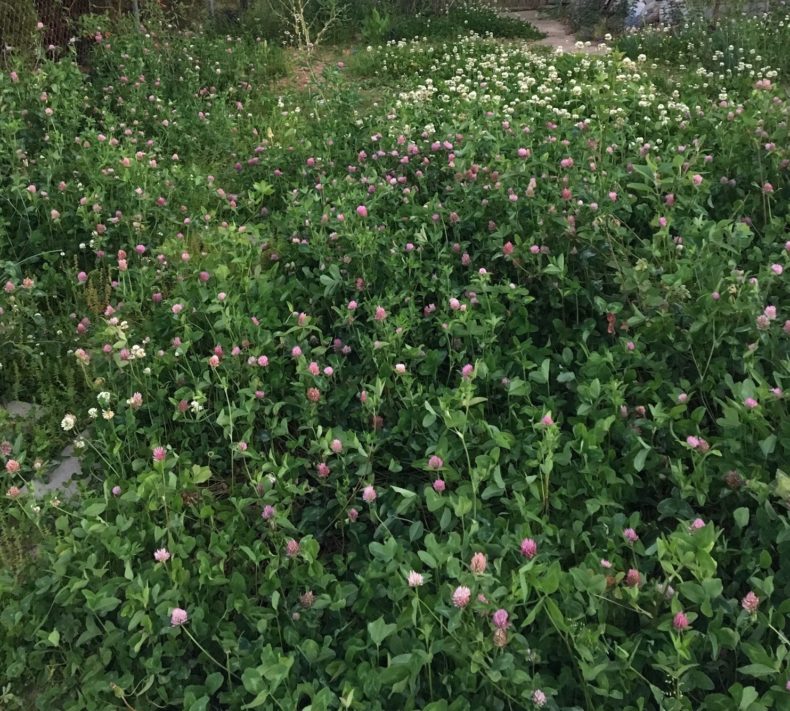
Years ago, when I moved into my house, I had a dream. I was going to remove all the grass, destroy the lawn and never have to mow. My yard—nay, my patchwork of service-providing gardens—would offer food for humans and animals, as well as habitat, color and deeply soothing smells. I planted all the clovers—white, red, crimson—to rehab the soil and feed the wild bees. Milkweed for the monarchs. Fennel and dill for me and the swallowtails. Anise goldenrod and bee balm for teas, a fig tree, blueberry bushes, and lots of native species for my poor insect friends who need love now more than ever. The universe laughed.
Just like every year, this spring was magical. The clover smelled amazing, the mayapples were cute, the lavender didn’t die. But then August happened. By the second half of summer, my gardens had become killing fields—invasive plants killing every tender thing I love, and me trying to kill the invasives.
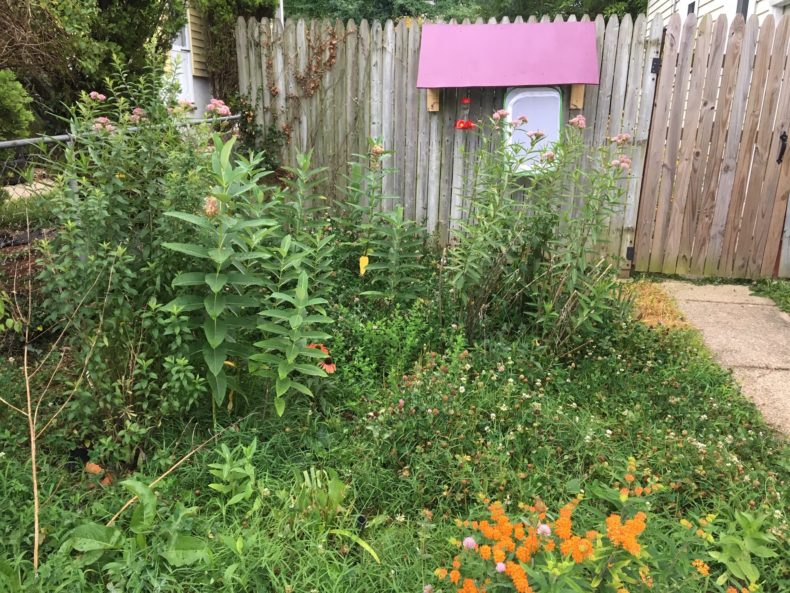
Japanese stilt grass, crab grass, Kentucky bluegrass, Bermuda grass—don’t let the names fool you. They’re non-native, invasive species, and they’re total bullies. Grass like this is why I can’t have nice things. And then there’s my neighbor’s invasives: Chinese wisteria, his rose of Sharon and his English ivy. In weak moments, I find myself cruising the hardware store shelves where they keep the glyphosate.
The real problem with “invasives” and “non-natives” is that they interfere with the beautiful, complex ecosystems of native species that have evolved over eons. But when I think about it too long, everything starts to seem futile. I feel about kudzu the way I feel about climate crisis: the time to stop that train was a long, long time ago. Our post-1492 world will have kudzu and trees of heaven, whether we like it or not. That ship—or rather, those ships— has sailed.
As if the invasive plants aren’t bad enough, the other morning I noticed a fat rat moseying through my herbal tea garden. In broad daylight. I know this is Baltimore, but that rat wasn’t even in a hurry. Our city’s rats, by the way, are Norway rats, also called “ship rats,” because of how they got here.
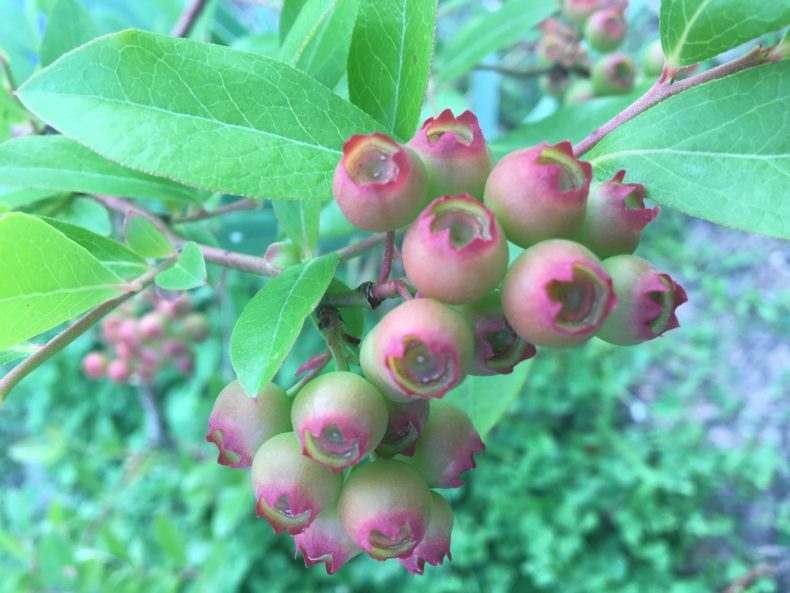
You’d think that maybe some cats, another invasive species, could kill those rats. Ah, but they know their limits. I got a kitten in June, and she is the best mammal that ever lived, but I’m going to keep her indoors. It was a hard decision—she’s a wild thing, and science is divided on whether cats as a species are even domesticated. But recently, a beloved cat gifted me a pretty, dead goldfinch, and that sealed the deal.
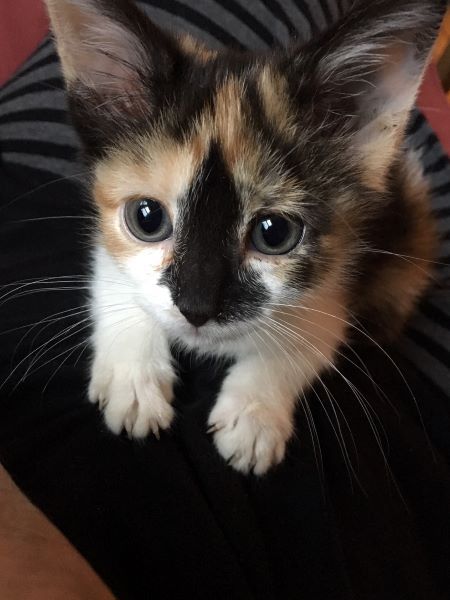
The Australians have a massive feral cat problem on their hands: the non-native cats are endangering dozens of native species, possibly driving them toward extinction. The Aussies’ solution is to airdrop sausages made of kangaroo meat and a poison known as 1080, which the government says will kill only non-native species. The native wildlife can tolerate the poison, they say, because it’s a version of a chemical that occurs in plants from the region, and native species will have evolved to be tolerant of it. Species not native to Australia, like dogs and humans, need to avoid the sausages.
These thoughts lead to lots of internet searches on whether humans are a native species. That question alone is at the center of much debate. Native to what? We evolved in Africa and spread rapidly; are we even old enough, as a species, to be considered native to our place of origin? Are we woven into any beautiful, complex ecosystems? Some people define “invasive” as a species that has been introduced to a new ecosystem—but there was no hand of God that introduced us. We mobilized on our own, using those ships with the rats and the kudzu. Science talks about several criteria for declaring a species invasive, but is there any species on Earth more invasive than Homo sapiens? If we’re tallying species that are being driven to extinction, those feral cats have nothing on humans.
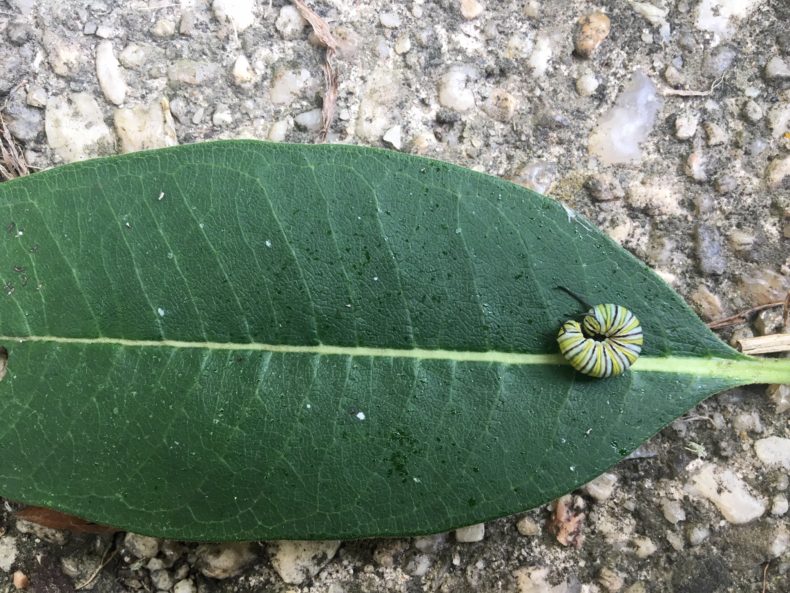
In darker moments, I imagine that some other concerned species with big brains might be discussing plans for a 1080 for humans. Whales are supposed to be very smart. Would it be the whales?
But there are lighter moments, when I take a break from my killing fields and just watch the wildlife. Summer doesn’t have to be a full-time siege. I can enjoy the ruby-throated hummingbirds feasting on my cardinal flowers. I just have to keep the wisteria far, far away.
_________
Grillo, who has written for LWON before, is a writer and editor at the Johns Hopkins Center for a Livable Future, focusing on how our food systems affect the environment, our diets, public health, climate change, public policy—and vice versa. She also writes as a freelancer about science, public health, parenting, people, and human rights. Here’s her website.
_________
All photos by the author herself.
I spent part of this weekend on my sister’s rural TN front porch watching five, exactly five, humming birds do battle over three feeders designed and placed in nature specifically for them. It exhausted me even though no killing occurred.